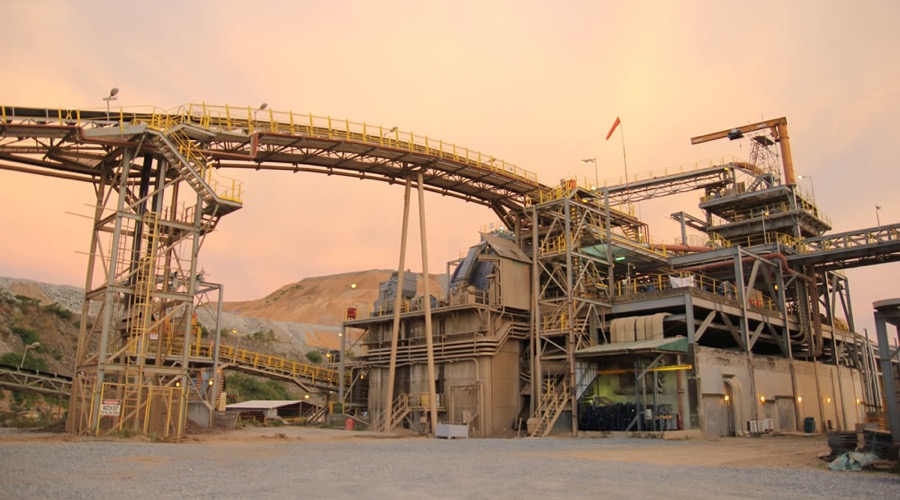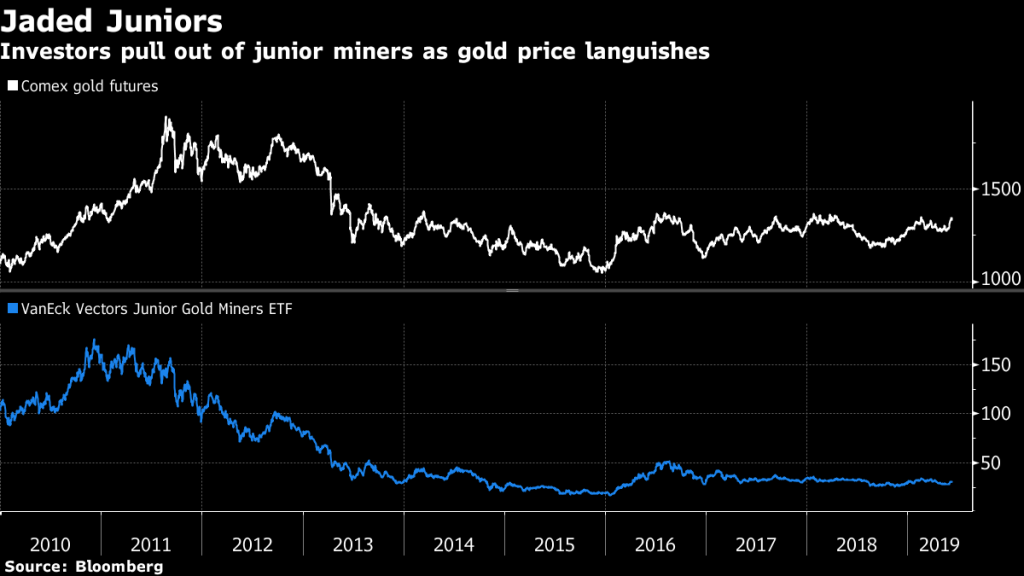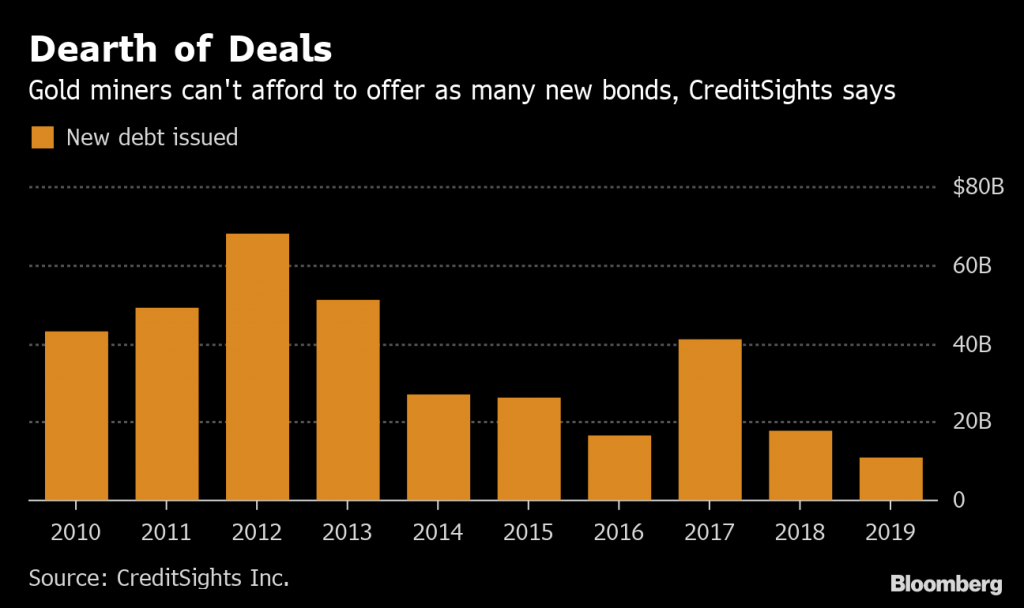
The cost of money is rising for small and mid-sized gold miners.
Newmont Goldcorp Corp. and Barrick Gold Corp., the biggest producers, have grown even bigger by buying up peers, shaping themselves as strong candidates for commercial bank lending. Meanwhile, smaller companies struggling to meet deadlines and budgets on new projects are increasingly forced to turn to private equity to expand.
In some ways that’s good. Private financing often offers smaller miners more insight on projects than a commercial bank might. At the same time, private capital is harder to land and higher priced, with an average weighted cost of roughly 15%-20% compared with 5%-6% for the majors, according to Sprott Inc., a precious metals-focused money manager.
“Private equity money tends to be expensive,” said Douglas Silver, a portfolio manager at Orion Mine Finance. “But where else are they going to get the money? It’s expensive to mine these days.”
“Large banks aren’t willing to lend debt to companies that don’t have revenue”
Andrew Kaip, equity analyst at BMO Capital Markets
Small gold companies, which are usually mineral explorers and mine developers, have little to no revenue, while miners are considered mid-sized when they produce less than 1 million ounces a year. In contrast, Barrick, which closed on its acquisition of Randgold Resources Ltd. on Jan. 1, produced 1.4 million ounces in just the first quarter of 2019.
While future growth prospects can entice equity investors, debt investors’ primary concern is whether a company can produce enough cash to make good on their obligations. The smallest companies often produce little or no steady revenue as evidence of their value.
Despite a recent price breakout to a roughly five-year high, gold prices are still down about 28% below their peak earlier this decade, making mine development a tough sell. “Large banks aren’t willing to lend debt to companies that don’t have revenue,” said Andrew Kaip, an equity analyst at BMO Capital Markets.
Smaller miners are “having a very difficult time finding sources of capital,” Kaip said in an interview. “That’s where private equity comes in.”
Peter Grosskopf, Sprott’s chief executive officer, said last month that the gap between the biggest producers and everyone else is sitting at its widest ever. “Based on all my experience, there has never been a greater divergence,” Grosskopf said at the Mines and Money Conference in New York.
“In the asset management business, everything is based on what you can index and what you can put in diversified portfolios easily,” Grosskopf said. “You can’t do that with gold, so every single gold sector fund in the world is either being liquidated or under pressure to index. There is no room for juniors.”

Major mining companies raised $3.37 billion in capital during 2018 on the Toronto Stock Exchange — the world’s most popular exchange for miners — down from a decade ago at $19.02 billion. Meanwhile, between about $20 billion and $30 billion in private capital is currently flowing to miners, according to data collected by Orion Mine Finance’s Silver.
“The market collapsed in 2008, 2009 and they increased the margin calls on the big banks,” Silver said. In reaction, banks pulled back from riskier investments, which meant reducing their exposure to mining.
U.S. gold miners have issued decreasing amounts of debt to the market in the last decade, down to $17.9 billion in 2018 from $42.98 billion in 2010, according to data from CreditSights Inc. The challenge: “they don’t have anything that’s driving the free cash flow,” said Wen Li, a mining analyst at the debt research firm.

“For the smaller companies it’s going to be dependent on the company itself,” he said. “Are they generating cash? Do they have assets? Are they rallying on the developments? Generally speaking it’s going to be more difficult for a smaller company to come to the market and tap the capital needed versus a bigger company out there.”
Still, there are mid-sized miners that have managed to gain the attention of commercial banks. B2Gold Corp. has won a number of revolving credit facilities from a group of banks including HSBC over the last several years.
Earlier this month it announced it received new commitments from the group at $600 million with the possibility of another $200 million available “if and when we wanted it,” CEO Clive Johnson said in an interview last month.
Now at the bottom of a market cycle, private firms are placing bets on the industry’s upside. The only caveat is the funding costs more, and companies like Premier Gold Mines Ltd. can feel it.
“Right now Premier is a company that’s growing,” CEO Ewan Downie said in an interview in New York last month.
While Downie said he’s thankful the company is able to spend money on the two mines it’s developing, he recognizes one of the challenges of being a smaller miner right now is that investors aren’t as readily trusting of companies his size and charge him more than he’d pay to a big bank for the risk.
“We’re being penalized for spending money,” he added. “It’s a necessary evil. You have to spend the money to make the money in our business.”
(By Justina Vasquez)
Comments